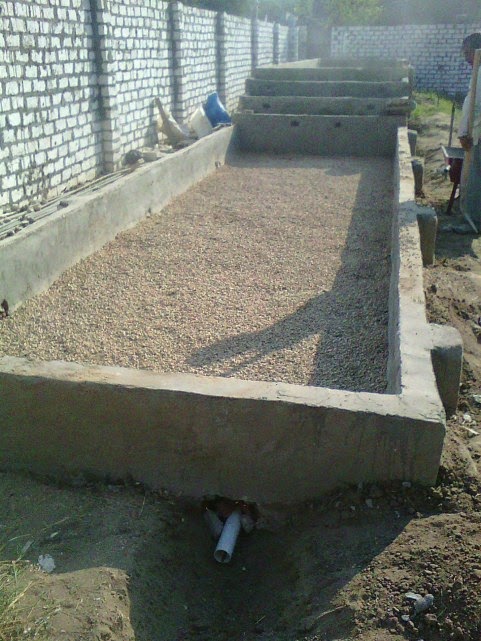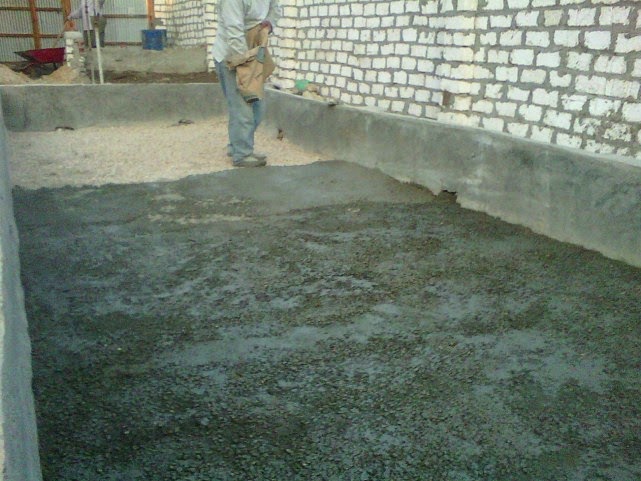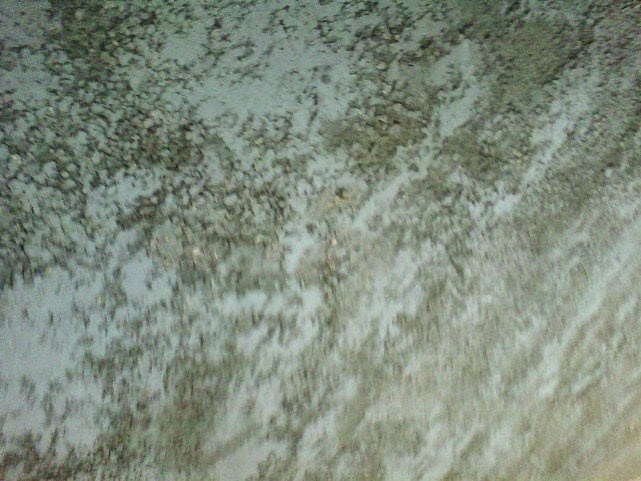Got my fishes yesterday.
I called Liley Fisheries earlier in the week to see if I could come pick up some trout and we decided on Thursday morning for pickup. Originally, I thought I would get fingerlings (very small fish), but the smallest they had were 4-6 inch fish, which makes sense since the fingerlings they had earlier in the summer would have grown. Anyway, this changed my original idea that I could pick up the fish in a big bag inside a box. The man I spoke with (K.C.) told me I would need about a 30-gallon container and that I would need to have a way to aerate the fish during transport. Apparently, cold-water fish are very sensitive to low oxygen levels, so even the two-hour drive would be too long for them to be without some kind of aeration. So, I went to Walmart and bought a power inverter so I could use my aquarium air pump.
I also purchased a 35-gallon trash can and drilled holes in the top so I could run the air hoses into the container. I packed my air pump, air hoses, tie downs, and my trusty roll of duct tape and at 6:45 Thursday morning, I was on my way. I knew driving through Denver at 7:30 wasnt a great idea, but I needed to be back by 11:00 for a meeting. When I got to the fish farm, the guys were expecting me. The guys at Liley Fisheries are awesome! Very friendly and helpful - nice guys! I was worried about having to tie down the trash can and get everything prepared for the drive home, but the guys at Liley were awesome. They filled up the container with water, added the 40 fish, tied down the trash can and set up the air pump for me, ensuring that everything was secure. And, of course, the duct tape came in handy. :-)
?
?
The ride home was uneventful (and much faster than the drive up). I tried to get a few pictures of the fish, but the container was so dark, I couldnt see more than a couple of inches into the container. Even with a polarizing filter, I couldnt see very far into the water. Here are a few pictures. I adjusted the brightness and contrast a little, which helped. I used the green bucket to move the fish a few at a time from the trash can to the fish tank.
I was worried that the pH of my water was going to be too high, but a few days ago, it actually lowered a little. When I got home, I checked the pH and temperatures of the water from the fish farm and the water in my tank. The pH of the water from the fishery turned out to be as high as mine was when I first started cycling the tank (about 7.4), so apparently the theory that the pH is more important to the plants than it is to the fish must be true. These guys grew up in high pH water and they seem to be fine. The temperatures happened to be almost identical. I replaced some of the water in the trash can with my tank water a few times, but when the pH level in the trash can didnt change, I got impatient and just started moving the fish over.
I was upstairs working from home for the rest of the day. Within the first hour, I started hearing fish jumping. Not good, since the water level is only a few inches from the top of the tank, so they could easily jump out. Apparently, trout like to jump, and are especially prone to do so when theyre introduced to a new environment. So I went downstairs and covered the tank with chicken wire.
I was so excited to get my fish so I could watch them swim around and name them (Silvery 1, 2, 3...), but unfortunately, this tank is really dark and I cant really see anything. I bought a submersible pond light and put it at the bottom of the tank, so now I can see a few of the fish. They actually like to swim up to the light and look at it. But I cant get any pictures of it. Maybe my next purchase will have to be an underwater camera with a light. :-)
BTW, the fish cost $1.21 each. And I highly recommend Liley Fisheries to anyone who is in the market for trout and other game fish. Theyre great guys! They stock public and private ponds (and other bodies of water) and perform other types of services, such as pond aeration and consulting services.
Continue reading
I called Liley Fisheries earlier in the week to see if I could come pick up some trout and we decided on Thursday morning for pickup. Originally, I thought I would get fingerlings (very small fish), but the smallest they had were 4-6 inch fish, which makes sense since the fingerlings they had earlier in the summer would have grown. Anyway, this changed my original idea that I could pick up the fish in a big bag inside a box. The man I spoke with (K.C.) told me I would need about a 30-gallon container and that I would need to have a way to aerate the fish during transport. Apparently, cold-water fish are very sensitive to low oxygen levels, so even the two-hour drive would be too long for them to be without some kind of aeration. So, I went to Walmart and bought a power inverter so I could use my aquarium air pump.
| Power Inverter |
| Tied down and taped up |
?
| Air pump and hoses running into container |
The ride home was uneventful (and much faster than the drive up). I tried to get a few pictures of the fish, but the container was so dark, I couldnt see more than a couple of inches into the container. Even with a polarizing filter, I couldnt see very far into the water. Here are a few pictures. I adjusted the brightness and contrast a little, which helped. I used the green bucket to move the fish a few at a time from the trash can to the fish tank.
| Silvery 1 |
 |
| Silvery 2 |
| Silvery 3 |
| Silvery 11, Silvery 25 and Silvery 31 |
I was upstairs working from home for the rest of the day. Within the first hour, I started hearing fish jumping. Not good, since the water level is only a few inches from the top of the tank, so they could easily jump out. Apparently, trout like to jump, and are especially prone to do so when theyre introduced to a new environment. So I went downstairs and covered the tank with chicken wire.
| Fishy Lockup |
I was so excited to get my fish so I could watch them swim around and name them (Silvery 1, 2, 3...), but unfortunately, this tank is really dark and I cant really see anything. I bought a submersible pond light and put it at the bottom of the tank, so now I can see a few of the fish. They actually like to swim up to the light and look at it. But I cant get any pictures of it. Maybe my next purchase will have to be an underwater camera with a light. :-)
BTW, the fish cost $1.21 each. And I highly recommend Liley Fisheries to anyone who is in the market for trout and other game fish. Theyre great guys! They stock public and private ponds (and other bodies of water) and perform other types of services, such as pond aeration and consulting services.















 Every year I look forward to the popular Big Timber Womens Club bazaar, which takes place on the first Saturday in November.
Every year I look forward to the popular Big Timber Womens Club bazaar, which takes place on the first Saturday in November.








